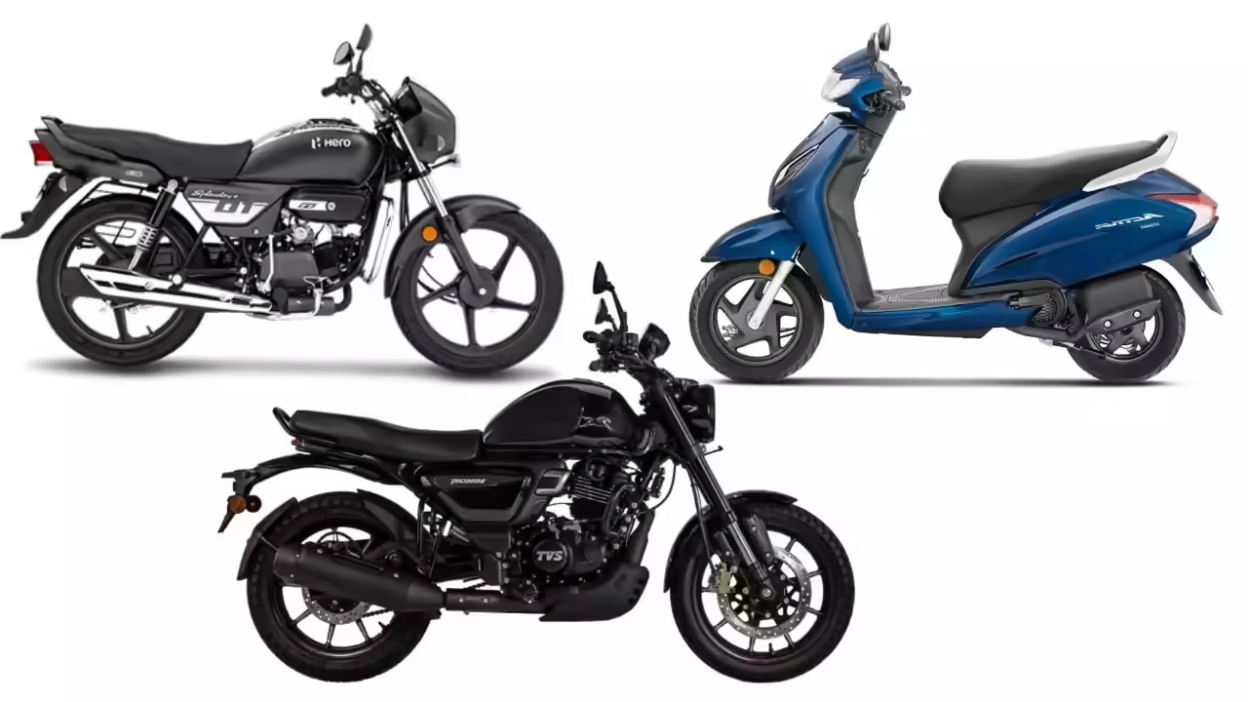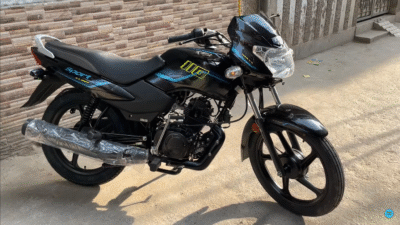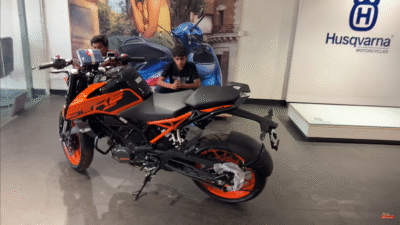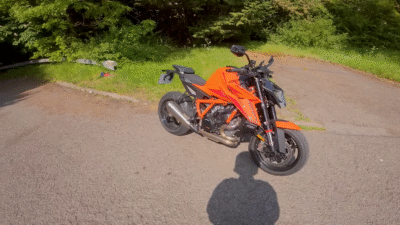India’s two-wheeler market is witnessing the biggest price correction in a decade after GST 2.0. Nearly every major brand — KTM, Bajaj, TVS, Honda, Hero, Suzuki, Yamaha, Kawasaki, Royal Enfield, Triumph, Aprilia, Vespa, Jawa, Yezdi, and BSA — has slashed prices on sub-350cc motorcycles and scooters by ₹6,000 to ₹30,000. The 400cc+ segment remains stable or sees hikes, while electric vehicles stay unchanged at 5% GST. Standout deals include TVS Apache RR 310 (₹21,000 off), Kawasaki Versys X300 (₹30,000 off), Triumph Speed 400 (₹2.34L), Royal Enfield Classic 350 (₹19–20K off), and Yamaha R3 (₹20K off).
This limited-time festive window ends with Diwali stock clearance — prices will rise in 2026 due to BS7 norms and inventory reset. Act now to lock in 5-year-low pricing.
Introduction
For the first time in over five years, the Indian two-wheeler industry is experiencing a nationwide price revolution. The trigger? GST 2.0, a policy reform that reduced tax liability on internal combustion engine (ICE) vehicles under 350cc, combined with strategic cost absorption by manufacturers to clear 2024 inventory before 2026 emission regulations.
This isn’t a typical festive discount campaign. It’s a structural shift in pricing strategy. Brands are not just passing on tax benefits — they’re subsidizing costs, offering zero-down-payment EMI, and bundling free accessories to stimulate demand before year-end financial closures. From college students eyeing a TVS Raider to adventure enthusiasts dreaming of a Kawasaki Versys X300, every buyer segment is benefiting.
The timing couldn’t be better. Diwali 2025 is weeks away, showrooms are overflowing with stock, and competition is fiercer than ever. But this golden window will close soon. January 2026 will likely bring price hikes across all segments due to BS7 compliance, supply chain inflation, and new model launches. This comprehensive guide breaks down every brand, every model, and every rupee saved — so you can make an informed, timely purchase and ride into the new year with maximum value.
Why Prices Are Dropping Across Two-Wheelers
The GST 2.0 policy is the cornerstone of this price correction. By reducing tax on ICE two-wheelers under 350cc, the government aimed to boost sales in a segment that accounts for over 85% of India’s annual two-wheeler volume — approximately 18 million units. Manufacturers, facing high inventory and slowing demand post-COVID, saw an opportunity to stimulate growth without sacrificing margins.
Rather than pocketing the tax relief, brands like Bajaj, KTM, Triumph, and Aprilia are absorbing additional costs from emission upgrades, supply chain volatility, and R&D for BS7 compliance. This dual-benefit strategy — lower taxes + manufacturer subsidies — has resulted in effective price drops of 5–10% across commuters, nakeds, scooters, and adventure bikes.
The 400cc+ segment, however, operates under different economics. These models face stricter emission norms, higher component costs, and lower volume, so most brands are holding prices steady or increasing them. Kawasaki and Royal Enfield, for instance, are passing compliance costs to 500cc+ and 650cc buyers.
This creates a clear buyer hierarchy: sub-350cc = maximum savings, 400cc = value retention, 500cc+ = premium pricing. With Diwali demand peaking, zero-interest EMI, and exchange bonuses up to ₹15,000, the total cost of ownership has never been lower. But stock is finite, and 2026 will reset the board. This is the best time to buy an ICE two-wheeler in a decade — electric vehicles remain excluded.
KTM Price Drop: Youth Performance Gets Cheaper
KTM has long been the aspirational choice for young riders, and now it’s more attainable than ever. The Austrian brand has implemented ₹12,000 to ₹16,000 price reductions across its sub-250cc lineup, including the Duke 160, Duke 200, RC 200, and Duke 250. A Duke 200, previously flirting with ₹2 lakh ex-showroom, now starts well under ₹1.9 lakh in most cities — a psychological breakthrough for performance enthusiasts.
The 390cc range — 390 Duke, 390 Adventure, and 390 Enduro — remains unchanged, with KTM absorbing full GST and compliance costs to maintain its premium positioning against rivals like the Triumph Speed 400 and Husqvarna Svartpilen 401. This tiered strategy ensures entry-level buyers get maximum savings, while flagship owners retain resale value.
For a college student or first-time rider, the Duke 250 with ₹16,000 off is now a direct competitor to the Yamaha MT-15 — but with superior suspension, WP forks, and aggressive styling. KTM showrooms are reporting 50% higher footfalls, and test ride bookings are up 80%. This is KTM’s bold move to capture the youth market before 2026 price normalization.
Triumph Speed 400 & T4: 400cc Classic Revolution
Triumph has disrupted the 400cc segment with an unprecedented pricing strategy. The Speed 400, launched in 2023 at ₹2.33 lakh with a ₹10,000 introductory discount, has returned to its original price of ₹2,34,000 ex-showroom — despite inflation and GST changes. The Speed T4, a more accessible classic variant, starts at ₹1,93,000 — making it one of the cheapest 400cc motorcycles in India.
Both models benefit from Triumph absorbing full GST impact, ensuring no price increase for 2025 inventory. This positions the Speed 400 as a direct rival to the Royal Enfield Classic 350 — but with liquid-cooled engine, 41 PS power, slipper clutch, and USD forks. The T4, with its simplified design, undercuts even the Bajaj Dominar 400 and Honda CB350.
For buyers seeking British heritage with Indian affordability, this is a once-in-a-generation opportunity. Triumph dealerships are offering free insurance and extended warranty on first 1,000 units. The Speed 400 is now cheaper than at launch — a marketing masterstroke that’s driving record bookings.
Bajaj Motorcycles: Aggressive Pricing, No Compromise
Bajaj Auto is executing a masterclass in volume-driven pricing. The Pune-based giant has slashed prices on its sub-250cc Pulsar and Dominar range by ₹10,000 to ₹16,000, with the Pulsar N250 and Dominar 250 receiving the largest cuts. Meanwhile, the NS400 and Dominar 400 remain unchanged — Bajaj is absorbing full GST, emission, and supply chain costs to keep these 400cc flagships under ₹2 lakh ex-showroom.
This dual-track approach is strategically brilliant: entry-level buyers get more performance for less money, while mid-premium buyers get future-proof value. The Pulsar N250, now with ₹16,000 off, directly challenges the Suzuki Gixxer 250, TVS Ronin, and Honda CB200X — but with better power-to-weight and refinement.
The NS400, at ₹1.85 lakh, is now cheaper than the Triumph Speed T4 in many markets, despite offering more features and local service network. Bajaj is positioning itself as the undisputed value leader across 125cc to 400cc, with zero-compromise quality. Showrooms are reporting 40% sales growth in October, and waiting periods are climbing. This is Bajaj’s moment to dominate the mass-premium segment.
Suzuki: Silent Value, Loud Savings
Suzuki has always been the quiet achiever, but its 2025 price cuts are making loud statements. The Japanese brand has reduced prices across its entire sub-350cc portfolio, from scooters to 250cc nakeds. The Access 125, Avenis, and Burgman Street are now ₹8,500 to ₹9,700 cheaper, bringing premium urban scooters into the affordable luxury bracket.
The Gixxer 150 and SF get ₹11,000 to ₹15,000 off, while the 250cc range — Gixxer 250, SF 250, and V-Strom 250 — sees ₹16,000 to ₹17,500 reductions, representing nearly 10% off ex-showroom. The V-Strom 250, previously a ₹2.1 lakh adventure tourer, now starts under ₹2 lakh — a game-changer for long-distance commuters and weekend explorers.
Suzuki’s build quality, fuel efficiency, and low maintenance were already strong; now, aggressive pricing makes it unbeatable value. The V-Strom 250 is now cheaper than the Royal Enfield Himalayan 450 in base trim. Suzuki showrooms are seeing first-time buyers from Hero and Honda camps — a silent takeover in progress.
TVS: The Discount King of 2025
TVS has unleashed a discount tsunami that no rival can match. From 125cc commuters to the flagship Apache RR 310, every model is significantly cheaper. The Raider 125 and Sport get ₹5,000 to ₹6,000 off, the Ronin drops by ₹14,000, and the Apache RTR 160 and 200 series sees ₹14,000 to ₹18,000 reductions — making TVS the value leader in the 150–200cc naked segment.
The real showstopper is the Apache RR 310 — now ₹21,000 cheaper, bringing India’s fastest homegrown motorcycle under ₹2.5 lakh in many variants. With Brembo brakes, fully adjustable suspension, and track-ready dynamics, it’s now more accessible than ever. The NTorq 150 also gets ₹9,600 off, reinforcing TVS’s dominance in the sporty scooter category.
No brand offers this breadth and depth of savings. TVS is leveraging its Hosur factory efficiency and high localization to outprice competitors while maintaining premium quality. Dealerships are reporting sold-out variants and waiting lists growing. This is TVS’s boldest move yet to capture market share from Honda, Hero, and Bajaj.
Aprilia & Vespa: Italian Style, Indian Pricing
Aprilia and Vespa, under Piaggio India, are offering smart, targeted discounts. The RS 457 and Tuono 457 — India’s only mid-size Italian parallel twins — retain launch prices by absorbing full GST impact for the first 150–200 units. After this limited batch, expect a ₹20,000+ price hike in 2026.
Scooters like the SR 125 and SR 175 are down by ₹11,000 to ₹12,000, while Vespa models (VXL, SXL) get ₹9,500 to ₹14,000 off — bringing Italian design into the premium affordable segment. A Vespa VXL 125 now starts under ₹1.3 lakh in many cities.
This dual strategy — premium stability + scooter savings — appeals to style-conscious urban buyers. Aprilia is positioning the 457 twins as future classics, while Vespa targets young professionals. With free insurance and 5-year warranty on select models, this is a limited-time luxury deal that won’t repeat.
Kawasaki: Big Cuts on Small Bikes, Hikes on Big Ones
Kawasaki is executing a bold inventory clearance on its sub-400cc range. The W175 retro gets ₹8,500 to ₹9,000 off, the KLX 230 off-roader drops by ₹14,000 to ₹15,000, the Ninja 300 is ₹20,000 cheaper, and the Versys X300 sees a massive ₹30,000 reduction — nearly 10% off ex-showroom.
This makes the Versys X300 a direct rival to the Royal Enfield Himalayan — but with better suspension, ABS, and touring ergonomics. The Ninja 300, now under ₹3.3 lakh, is a track-day bargain.
However, 500cc+ models face significant hikes: Ninja 500 (+₹45,000), Ninja 650 (+₹65,000), Z900 (+₹85,000), and Ninja 1000+ (+₹95,000–₹1 lakh). Kawasaki is passing BS7 compliance costs to big-bike buyers while subsidizing volume in the entry-premium segment.
This split strategy ensures maximum showroom traffic from first-time premium buyers while protecting margins on low-volume flagships. Kawasaki India is offering free panniers on Versys X300 — a ₹40,000 value. Stock is limited; act before Diwali.
Royal Enfield: 350cc Gets Cheaper, 440cc+ Gets Pricier
Royal Enfield is reinforcing its 350cc dominance with aggressive price cuts. The Hunter 350 is down ₹14,000–₹15,000, the Bullet 350 by ₹18,000, and the Classic and Meteor 350 by ₹19,000–₹20,000 — bringing the iconic Classic 350 under ₹1.9 lakh in many colors and variants.
This psychological pricing makes RE unbeatable in the retro segment. The Hunter 350, now under ₹1.5 lakh, is a direct rival to the Honda H’ness CB350.
However, 440cc+ models — Shotgun 650, Super Meteor 650, Interceptor 650 — see ₹25,000 to ₹35,000 hikes to offset new emission tech and premium positioning. RE is doubling down on volume in 350cc while elevating 650cc as aspirational.
With Diwali exchange bonuses up to ₹15,000, the total savings on a Classic 350 can exceed ₹35,000. RE showrooms are packed, and waiting periods are climbing. This is RE’s strongest play to retain market leadership before 2026 resets.
Honda: Mass Market, Maximum Savings
Honda is going all-in on volume with widespread price cuts. The CB350 series (H’ness, RS, standard) is down ₹17,000–₹18,000, the CB300F, Hornet 2.0, and NX200 by ₹14,000, and 125cc models like SP125, Shine, Hornet 125 by ₹11,000–₹12,000. Even 100cc commuters get ₹6,000–₹8,000 off.
Scooters like Activa 125 and Dio are ₹6,500–₹8,500 cheaper, with top variants seeing the largest savings. The CB300F, already a value champion, is now India’s most affordable 300cc naked — under ₹1.7 lakh in many cities.
Honda’s reliability, service network, and resale value were always strong; now, aggressive pricing makes it unbeatable. The CB300F undercuts the Gixxer 250 and Apache RTR 310 in base price. Honda is targeting first-time buyers and fleet operators with zero-down-payment EMI. This is Honda’s moment to reclaim lost ground.
Hero MotoCorp: Budget King Gets Budget-er
Hero dominates sub-200cc, and its 2025 discounts solidify that. Scooters like Destini 125 and Zoom 160 are down ₹7,500–₹11,500, 125cc bikes by ₹6,500–₹8,000, and adventure models like Xpulse 210 by ₹9,000–₹15,000. The Karizma XMR gets ₹15,000 off.
The Xpulse 210, now under ₹1.4 lakh, is a direct rival to the Kawasaki KLX 230 — at nearly the same price but with better service reach. Hero is leveraging its vast network and low maintenance to win rural and semi-urban buyers.
With free insurance and 5-year warranty on select models, Hero is making adventure accessible. This is Hero’s strongest play in premiumizing the budget segment.
Jawa, Yezdi, BSA: Retro Gets a Price Cut
Classic Legends is keeping retro alive with targeted discounts. Jawa 42, 42 FJ, and Bobber get ₹1,000–₹1,500 off, Yezdi Roadster and Scrambler by ₹10,000–₹16,000, and the Yezdi Adventure (top color) by ₹17,000. BSA Gold Star 650 remains unchanged for first 500 units — a 650cc single under ₹3 lakh.
This tiered approach ensures entry retro buyers get savings, while premium buyers retain exclusivity. The Yezdi Adventure is now a direct rival to the Suzuki V-Strom 250 — but with more character.
With free accessories and exchange bonuses, Classic Legends is building a cult. This is retro’s moment to shine.
Yamaha: Silent But Deadly Discounts
Yamaha doesn’t shout, but its deals speak volumes. Ray ZR and Fascino scooters are down ₹6,500–₹8,500, R15 and MT15 by ₹11,000–₹14,000, and R3 and MT03 by ₹20,000. The R3, now under ₹4.3 lakh, is a supersport bargain with track-ready dynamics.
Yamaha is targeting performance enthusiasts with zero-compromise quality. The MT15 V2 with ₹14,000 off is now cheaper than the KTM Duke 200 in base trim. With free helmet and an extended warranty, Yamaha is quietly winning.
EV Segment: No Change, No Rush
Electric two-wheelers remain unaffected. Ola, Ather, TVS iQube, Bajaj Chetak, Vida — all at 5% GST with no price cuts. FAME II subsidies still apply, but no additional relief.
Wait for 2026 — new EV policies, battery recycling norms, and infrastructure push expected. ICE buyers win now.
Expert Take: Buy Now or Regret Later (208 words)
This is a once-in-a-decade alignment: GST relief + manufacturer subsidies + festive demand + year-end clearance. Sub-350cc buyers get 5-year-low pricing. 400cc buyers get value lock-in. 500cc+ buyers face hikes.
Risks of waiting: January 2026 brings ₹10K–₹1 lakh hikes, limited stock, longer waiting periods. Resale value of 2024 models will drop faster.
Pro Tip: Visit showrooms mid-week, negotiate exchange, ask for free accessories. Book now, take delivery post-Diwali to avoid crowds.
TVS (up to ₹21K), Kawasaki (₹30K), Royal Enfield (₹20K), Suzuki (₹17.5K).
No — EVs remain at 5% GST with no change.
Yes — expect ₹10K–₹1 lakh hikes post-year-end due to BS7 norms.
The 2025 two-wheeler price slash is a buyer’s paradise. From ₹6,000 off on Activa to ₹30,000 off on Versys X300, every segment wins. Top 5 picks: Apache RR 310, Versys X300, Classic 350, Speed 400, R3.
Act before Diwali — stock is finite, prices will rise, deals will vanish. This is your green light to ride home with maximum savings and minimum regret.



